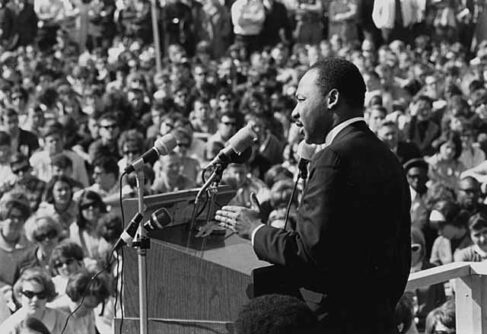“Go local” is one of those few rallying cries gets support on both the right and the left—support local businesses, eat local organic produce, give up your commute and work close to home. The “go local” movement has found its way into the philanthropic community too: Philanthropy Daily devotes a section of its website to “Philanthrolocalism.” And, there’s no more true “philanthrolocalist” philanthropy than parents’ support for their children’s neighborhood school.
However, the particular strand of community-centered philanthropy that focuses on neighborhood schools has come under attack on the left, as questions are raised about the fairness of parents in wealthier neighborhoods to outspend parents in poorer, nearby-communities. To make a fairer system, some say, schools that serve wealthier communities should be required to pool resources with schools that serve middle-class and poorer communities.
The New York Times just published an op-ed by Stanford University political scientist Rob Reich making exactly this case. Professor Reich describes how wealthy Bay Area school districts are asking parents for large gifts to their local schools—in the case of the Hillsborough, California, district, parents are asked for $2,300 per child, the per-pupil amount that, in fact, the local school foundation succeed in raising in 2012.
These funds have been put to good use, funding “class-size reductions, librarians, art and music teachers, and Smart technology in every classroom.” However, according to Reich, they have a dark side:
But charity like this is not relief for the poor. It is, in fact, the opposite. Private giving to public schools widens the gap between rich and poor. It exacerbates inequalities in financing. It is philanthropy in the service of conferring advantage on the already well-off.
To avoid this outcome, Reich argues we should forbid parents from giving exclusively to their children’s own schools and instead “require private giving to be aggregated across schools and shared equally with the entire school district [or, m]ore ambitiously. . . channel private giving to support poor districts.”
But, as Philanthropy Daily’s Naomi Schaefer Riley wryly observes, this kind of argument verges on suggesting that it is worse for wealthy parents to pay for school improvements than for students to do without those improvements.
All parents want to provide extras for their own kids—and wealthy parents deserve to do so as much as other parents. Just because it’s easier for them to do so doesn’t mean that it isn’t just as important to them. And, it’s worth noting that the funds in Hillsborough schools benefit all district students, not just those whose parents wrote the largest checks.
There are at least two key flaws in Reich’s arguments, one of which concerns schools in particular and the other about philanthropy generally.
First, Reich seems to assume, wrongly, that money spent on students translates into educational advantage, and so districts with more money spent per student offer their students a greater leg up in life. However, there’s at best a weak correlation between per-pupil spending and educational quality. Consider that combined private and public funding in the highly regarded Hillsborough school district Reich complains about is $15,800—while public funding alone in the District of Columbia public schools was nearly twice as great, totaling $29,400 in 2009–10. And yet, in spite of recent gains in D.C. public school students’ test scores—gains brought about by improved policies, not more spending—the D.C. public school system remain among the nation’s lowest-performing systems.
(Side note: one of the best ways to achieve equitable per-pupil funding is to have large school districts that encompass wealthy and less-wealthy communities. The smallness of many California school districts and the resulting inequalities in public funding for schools are probably greater sources of variation in school-district quality than the inequalities in private funding that Reich focuses on).
Second, philanthropy isn’t charity—notice how Reich uses the term interchangeably in the paragraph quoted above. Charity aims to relieve the suffering of the poor, while philanthropy has a broader purpose that includes supporting all kinds of people and institutions for all sorts of good ends. But Reich insists that parents’ giving, and, by implication, philanthropy more generally, must “shrink—not widen—the gap between rich and poor.” But shrinking gaps in wealth shouldn’t be a categorical imperative for philanthropists.
Philanthropy at its best connects the individual giver to a wider community—and “philanthrolocalist” philanthropy does this most readily. Philanthropy may shrink economic gaps, but, more importantly, it shrinks gaps in caring and connection to others. For many parents, there’s no more community they’re more readily engaged in and connected to than their children’s school. That’s all to the good—and so parents should be encouraged to support their children’s schools and local PTAs.






